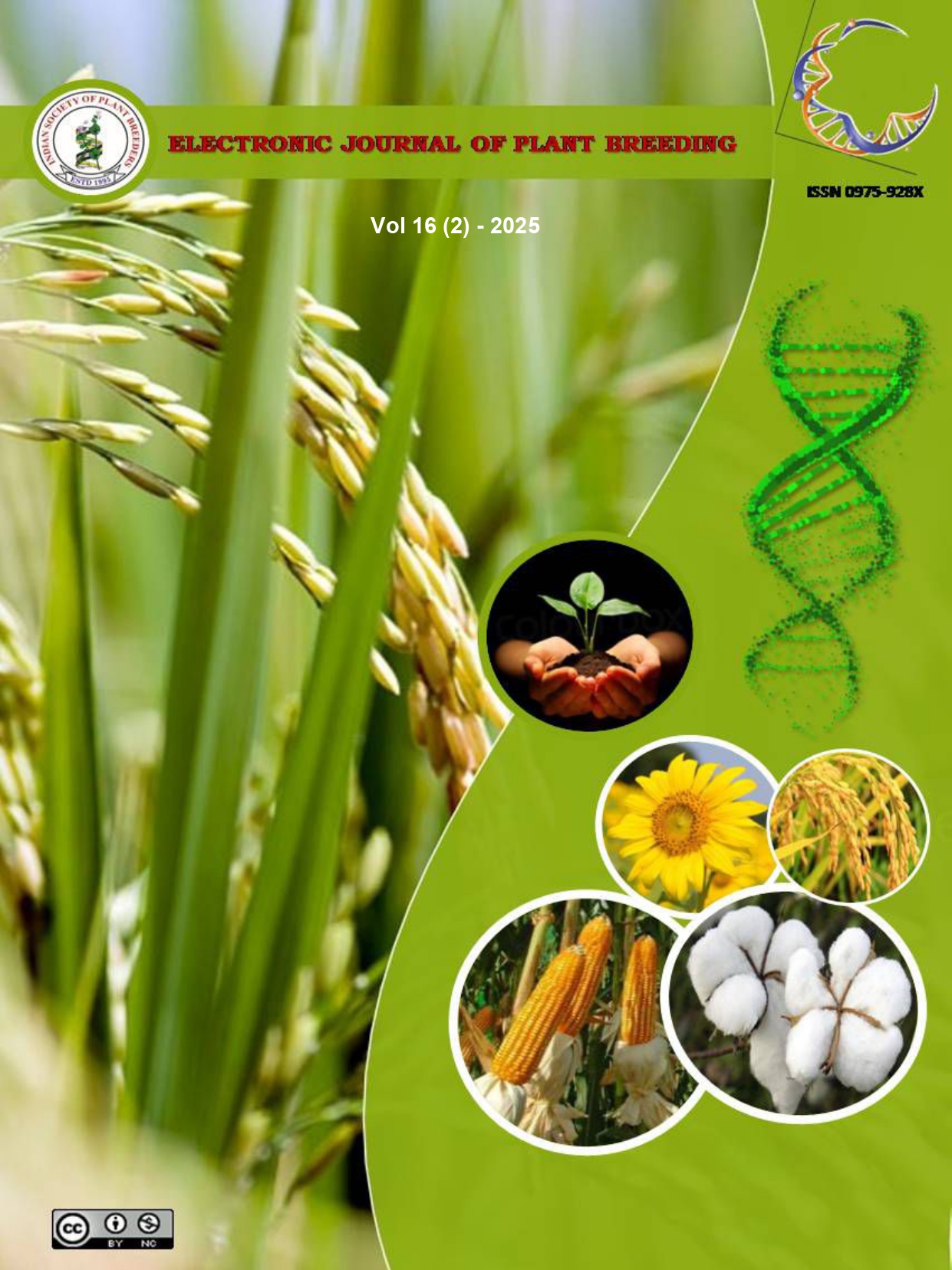Molecular and phenotypic evaluation of restorer lines for bacterial blight and blast resistance for developing heterotic hybrids in rice (Oryza sativa L.)
DOI: 10.37992/2025.1602.023
Abstract
The present study was carried out with an objective to identify restorer lines harbouring fertility restoration genes and resistance to the biotic stresses, Bacterial Blight (BB) and blast diseases. Seventy-one breeding lines were screened for the presence of fertility restorer genes viz., Rf4 and Rf3 along with target disease resistance genes, Pi54 for blast and Xa21, xa13 and xa5 for BB. Phenotypic evaluation against BB and blast diseases was done by artificial inoculation and raising the plants in disease screening nursery. Simultaneously, selected parental lines along with previously identified R lines were crossed with two CMS lines viz., APMS6A and CRMS32A for developing experimental 176 F1 rice hybrids. The rice hybrids along with seven checks were evaluated in Augmented RCBD for 15 yield and yield contributing traits. Based on the results of pollen/spikelet fertility analyses of the F1 hybrids, parental lines were identified as restorers, partial restorers or partial maintainers. The identified highly heterotic rice hybrids will be subjected to large scale multi-location testing. The potential restorers identified in this study will be highly useful for three-line hybrid rice breeding for developing biotic stress-resistant rice hybrids with higher grain yield.
Keywords: Hybrid Rice, Bacterial leaf blight, Blast, Fertility Restoration, Heterosis,
Molecular and phenotypic evaluation of restorer lines for bacterial blight and blast resistance for developing heterotic hybrids in rice Oryza sativa L.
. 2025. Electronic Journal of Plant Breeding, 16 2, 166-173. Retrieved from https://ejplantbreeding.org/index.php/EJPB/article/view/5322It is certified that:
- The corresponding author is fully responsible for any disputes arising due to the publication of his/her manuscript.
- The article has been seen by all the authors who are satisfied with its form and content.
- The sequence of names of authors in the by-line is as per their relative contribution to this experiment, giving due credit to all scientists who made notable contribution to it.
- All the authors fully understand that inclusion of any other co-authors or exclusion of any co-authors is not possible once the article has been submitted to the journal.
- The corresponding author takes full responsibility for this article.
- The address of the organization where the research was conducted is given.
- The article is exclusive for this journal, and the results reported here have not been sent (and will not be sent during its consideration by this journal) for publication in any other journal.
- Authors agree to abide by the objective comments of referees and do agree to modify the article into a short note as per the recommendation, for publication in the Electronic Journal of Plant Breeding.
- If published in Electronic Journal of Plant Breeding, the copyright of this article would vest with the Indian Society of Plant Breeders, who will have the right to enter into any agreement with any organization in India or abroad engaged in reprography, photocopying, storage and dissemination of information contained in it, and neither we nor our legal heirs will have any claims on royalty.



